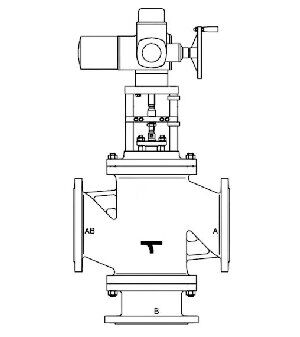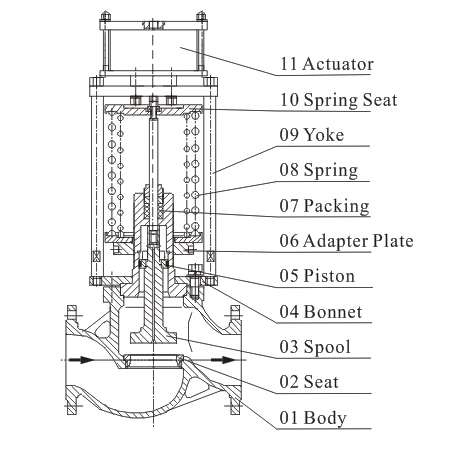Comparing Electric and Self-Operated Control Valves in Industrial Process
Control valves play a crucial role in industrial process control, facilitating precise regulation of parameters such as fluid flow, pressure, temperature, and liquid level. Among the various types available, electric control valves and self-operated control valves represent two distinct categories, each control valve offering unique features tailored to different industrial requirements.
1. Electric Control Valves
Electric control valves consist of valve components, an electric actuator, and a control system. These valves operate by receiving signals from the control system, which in turn drives the movement of the valve components (such as the valve plug or ball) to adjust the valve opening. This adjustment enables precise control over fluid flow, pressure, or other process parameters. Electric control valves typically require an external power source and utilize PID control algorithms to achieve high-precision positioning and control.

Features and Advantages
- Precision Control: Electric control valves are capable of achieving very high control accuracy, often within 0.1% or better.
- Remote Control and Monitoring: Suitable for integration into centralized control systems (e.g., DCS), allowing for remote operation, setpoint adjustments, and real-time monitoring.
- Fast Response: Can quickly adjust valve position to meet the real-time demands of process control systems.
- Wide Applicability: Suitable for a variety of media and operating conditions, particularly where frequent adjustments and precise control are required.
2. Self-Operated Control Valves
Self-operated control valves, also known as self-regulating valves, operate based on the pressure or temperature of the fluid flowing through them. These valves do not require an external power source or control signal for operation. Typical self-operated valves include pressure regulators and control valves, where the valve's position adjusts automatically based on the balance between spring force and process fluid pressure.

Features and Advantages
- No External Power Requirement: Self-operated valves operate independently of external power sources, reducing energy consumption and installation complexity.
- Versatility: Suitable for harsh environments and applications where external power is unavailable, such as high-temperature or corrosive media.
- Simplicity of Operation: Simplifies system design and maintenance, lowering overall operational costs.
- Lower Initial Investment: Compared to electric control valves, self-operated valves often have lower initial capital and operational costs.
3. Applications Comparison
Electric Control Valves: Primarily used in industries requiring high precision, remote control capabilities, and rapid response times, such as chemical processing, pharmaceuticals, and food production.
Self-Operated Control Valves: Commonly employed in applications where on-site control is sufficient, and setpoint adjustments are infrequent, such as heating systems, lubricating oil supply, and applications with stringent environmental conditions.
Choosing between electric control valves and self-operated control valves depends on specific industrial requirements and environmental conditions. Electric control valves excel in scenarios demanding precise control, remote operation, and integration with advanced control systems. Meanwhile, self-operated valves offer simplicity, reliability, and cost-effectiveness in applications where external power sources are impractical or unnecessary. As industrial automation advances, electric control valves continue to demonstrate their advantages in precise control and intelligent management, while self-operated valves remain invaluable for their robust performance in challenging operating conditions.

